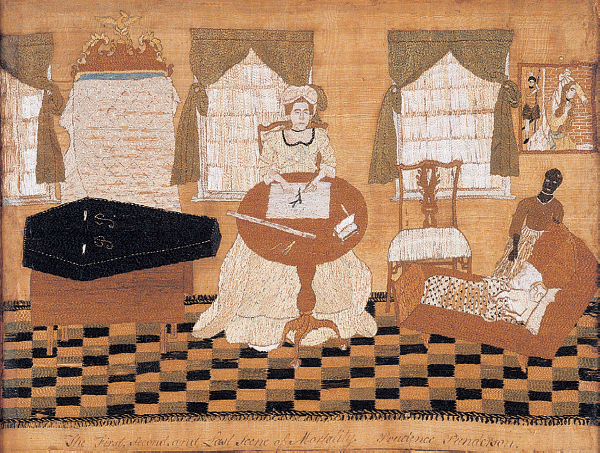America’s History: Printed Page 116
America: A Concise History: Printed Page 99
America’s History: Value Edition: Printed Page 97
Farm Families: Women in the Household Economy

The Puritans’ vision of social equality did not extend to women, and their ideology placed the husband firmly at the head of the household. In The Well-Ordered Family (1712), the Reverend Benjamin Wadsworth of Boston advised women, “Since he is thy Husband, God has made him the head and set him above thee.” It was a wife’s duty “to love and reverence” her husband.
Women learned this subordinate role throughout their lives. Small girls watched their mothers defer to their fathers, and as young women, they were told to be “silent in company.” They saw the courts prosecute more women than men for the crime of fornication (sex outside of marriage), and they found that their marriage portions would be inferior to those of their brothers. Thus Ebenezer Chittendon of Guilford, Connecticut, left his land to his sons, decreeing that “Each Daughter [shall] have half so much as Each Son, one half in money and the other half in Cattle.”
Throughout the colonies, women assumed the role of dutiful helpmeets (helpmates) to their husbands. In addition to tending gardens, farmwives spun thread and yarn from flax and wool and then wove it into cloth for shirts and gowns. They knitted sweaters and stockings, made candles and soap, churned milk into butter, fermented malt for beer, preserved meats, and mastered dozens of other household tasks. “Notable women” — those who excelled at domestic arts — won praise and high status (Thinking Like a Historian).
Bearing and rearing children were equally important tasks. Most women in New England married in their early twenties and by their early forties had given birth to six or seven children, delivered with the help of a female neighbor or a midwife. One Massachusetts mother confessed that she had little time for religious activities because “the care of my Babes takes up so large a portion of my time and attention.” Yet most Puritan congregations were filled with women: “In a Church of between Three and Four Hundred Communicants,” the eminent minister Cotton Mather noted, “there are but few more than One Hundred Men; all the Rest are Women.”
Women’s lives remained tightly bound by a web of legal and cultural restrictions. Ministers praised women for their piety but excluded them from an equal role in the church. When Hannah Heaton, a Connecticut farmwife, grew dissatisfied with her Congregationalist minister, thinking him unconverted and a “blind guide,” she sought out equality-minded Quaker and evangelist Baptist churches that welcomed questioning women such as herself and treated “saved” women equally with men. However, by the 1760s, many evangelical congregations had reinstituted men’s dominance over women. “The government of Church and State must be … family government” controlled by its “king,” declared the Danbury (Connecticut) Baptist Association.
UNDERSTAND POINTS OF VIEW
Question
What ideas, institutions, and responsibilities shaped New England farm women’s lives?